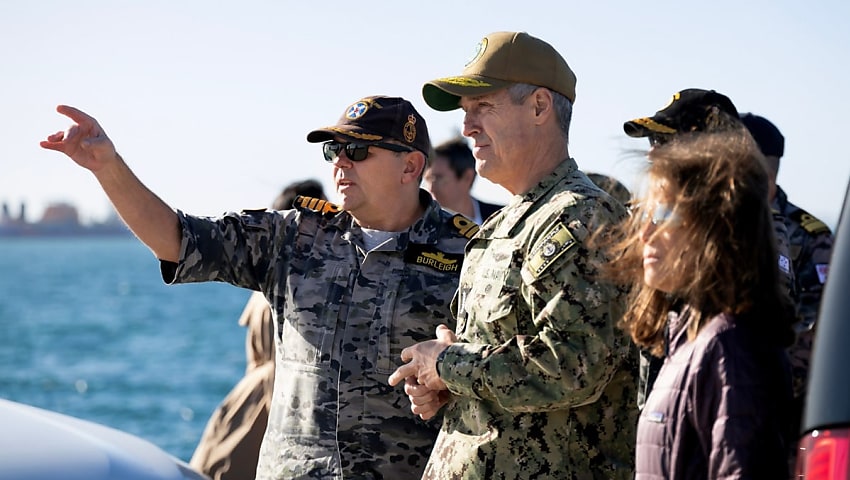US Pacific Fleet leadership has announced that America’s commitment to AUKUS is ironclad, during a tour of Australia earlier this week.
US Pacific Fleet Commander Admiral Stephen T. Koehler attended a discussion about how the US, Australia, and other allies are working together in the Indo-Pacific region, in Perth earlier this month.
The US Pacific Fleet comprises approximately 200 ships, 1,500 aircraft and 150,000 military and civilian personnel.
“We’re building capacity to support a rotational presence of UK and US submarines in Perth known as Submarine Rotational Force-West,” US Pacific Fleet Commander ADM Koehler said.
“SRF-West is one of AUKUS’ most impactful and within-reach initiatives. It employs Perth’s unique combination of positional advantage and strategic depth to maximise a key allied capability.
“Our commitment to AUKUS is ironclad. We have regularly deployed submarines to Australia, including a visit from USS Annapolis to Perth in March. Australian sailors have graduated from our Navy’s nuclear power school and are conducting follow-on training.
“Last week, I met with the three Royal Australian Navy Officers stationed on US Virginia Class submarines in Pearl Harbor. You should be tremendously proud of what they are doing and how they are developing in the Navy Nuclear power program. Australians have started to embark onboard our submarines on a greater scale. Australians are at US shipyards learning how to do nuclear maintenance. Australian service members and maintainers are in Guam learning how we conduct forward-deployed operations.”
Around 30 skilled ASC workers are the first to deploy to the Pearl Harbor Naval Shipyard to directly participate in training in the maintenance of US Virginia Class nuclear‑powered submarines alongside their US counterparts.
These ASC workers from South Australia and Western Australia comprise mechanical fitters and electricians as well as electrical, mechanical, and safety engineers and submarine maintenance and battery crew.
The international placements follow the Australian federal government’s announcement in March that it had selected ASC as a strategic partner in the sustainment and joint build of conventionally-armed, nuclear-powered submarines in Australia, starting with the sustainment of the Virginia Class and followed by the build and sustainment of Australia’s SSN-AUKUS submarines.
“This is another exciting step when it comes to developing the workforce we need for the AUKUS program which presents a once-in-a-lifetime opportunity for Australians to take advantage of unique and exciting education, training, and career development programs, both here and overseas,” Deputy Prime Minister Richard Marles said.
“These highly skilled workers already have decades of combined submarine experience having sustained our Collins Class submarines and now have the opportunity to be upskilled by our US counterparts in sustaining nuclear-powered submarines.
“Such unique education and training opportunities for Australian workers reflect the rock-solid commitment of our US and UK partners to our nation-building AUKUS program.”
In total, more than 100 Australian shipyard workers at ASC are expected to depart by mid-2025 for naval propulsion skilling at Pearl Harbor.
Once they have completed their overseas training – a mix of classroom and on-the-job learning – they will take up key roles in Western Australia as part of Submarine Rotational Force-West, where they will lead the sustainment of rotating US and UK nuclear-powered submarines. They will also pass on their skills and train other ASC workers through their lead roles.
One UK Astute Class submarine and up to four US Virginia Class submarines will be involved in a rotational presence through Submarine Rotational Force-West.
ASC employees already have decades of combined experience maintaining Australia’s Collins Class submarines, which will continue operating as Australia transitions to its future nuclear-powered submarine capability.
All work by Australian personnel in the US or the UK will remain consistent with Australia’s domestic and international legal obligations, including its non-proliferation obligations and commitments.


